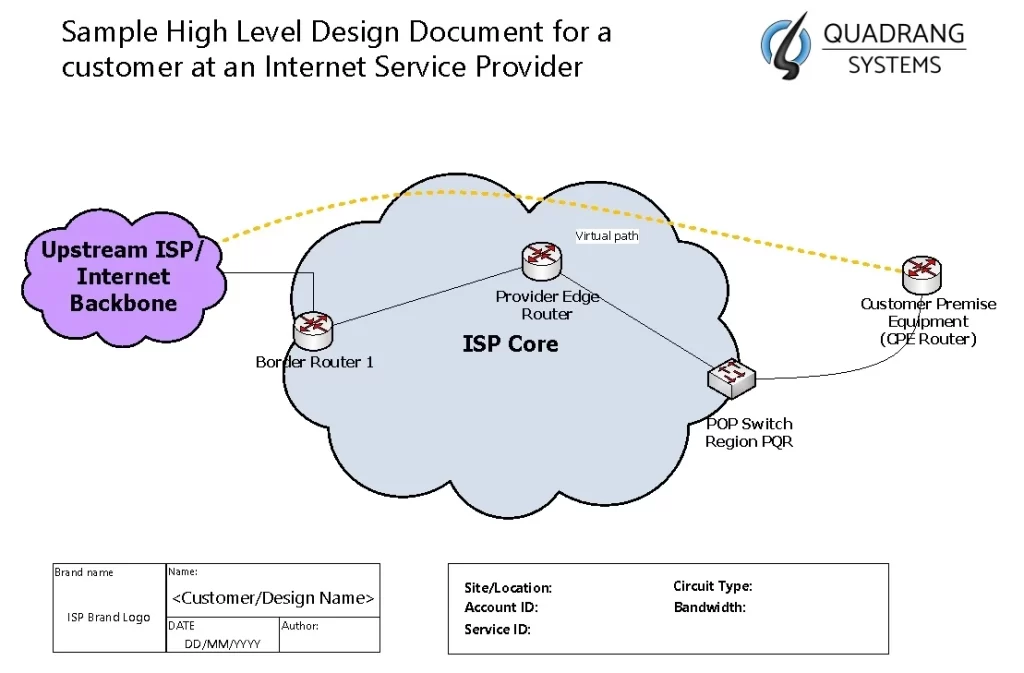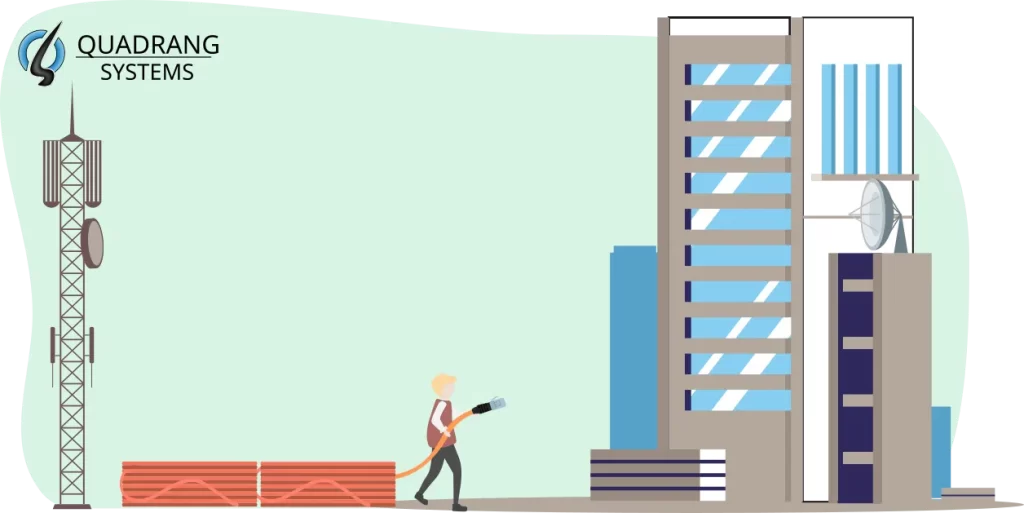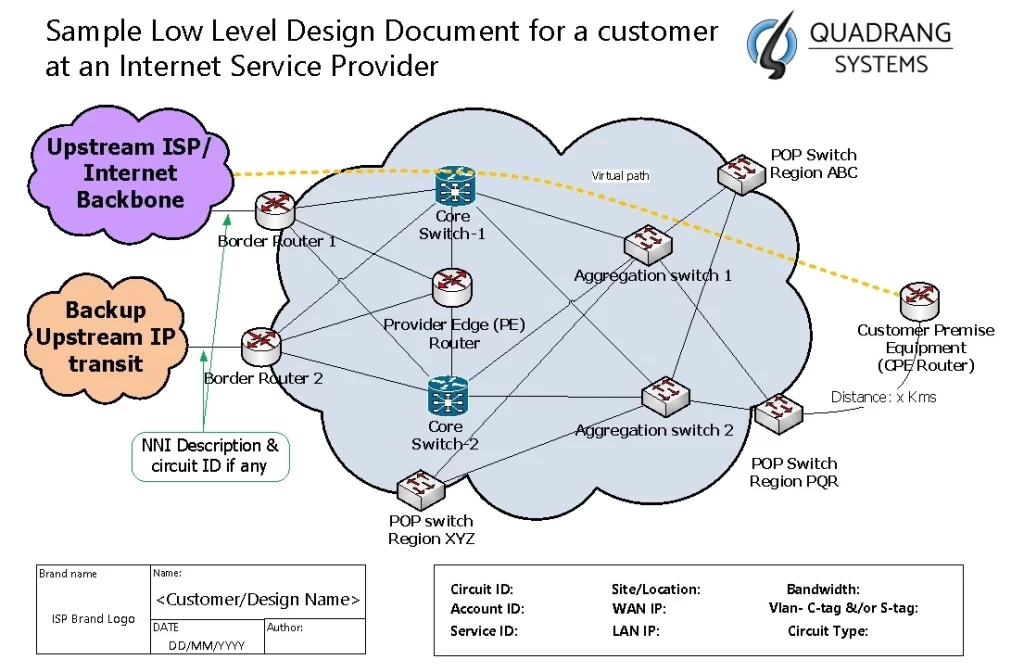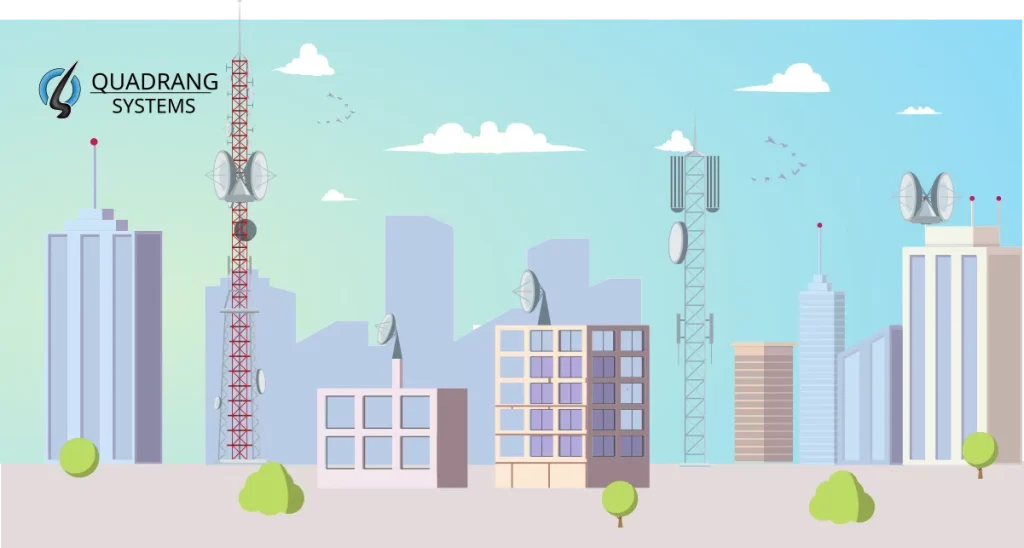5 Critical Components of High Level Design for Internet Service Providers
What is High Level Design?
Turning broad connectivity requirements into robust implementations demands upfront design dexterity. Before wading deep into granular technical specifics, high-level frameworks must be sketched out, encompassing core elements. What foundational pieces need to be pinned down for any ISP undertaking spanning infrastructure and customers?
The high level design in an Internet Service Provider’s purview can be defined the blueprint of a custom or a bespoke network solution for a customer within an ISP company. The HLD shows the basic building blocks of the service before it is provisioned
Key Elements of High Level Design Document
1) Customer details
This is obvious – for whom is this connectivity being built? The customer name, customer details like their head office or branch name should be included
2) Geographic A end to Z end
The high level design diagram should have the full geographical stretch of the proposed circuit from A end to Z end on GIS or some kind of map
3) DIA or EPL?
Depending on the customer’s requirements the circuit type may be DIA (Dedicated Internet Access) or an EPL (Ethernet Private Line). The DIA has Z end as the upstream ISP taking the traffic to the internet and A end as customer themselves. The EPL has A end and a Z end, both at two different customer sites in a point to point fashion
4) Bandwidth
The HLD may not have finalized the bandwidth, but a tentative understanding of the bandwidth is worth mentioning on the HLD. This gives a better view of circuit serviceability and whether the ISP path in the HLD have enough bandwidth that can cater the customer
5) Equipment details
Based on the geographic details above, the network equipment in the path should be mapped. The HLD should include all the ISP devices (which are mostly network switches) from A end to Z end.
Download High Level Design Document Sample
Download our High Level Design document file below which can serve as a good starting point for your HLD. This is a (.vsd) file and it can be opened and edited primarily by Microsoft Visio only, but for viewing, there are other tools such as Lucidchart, Visio Viewer, LibreOffice, etc
Benefits of Implementing High Level Design
- The High level design document serves as a great starting point for creating the Low Level Design. The HLD can be modified with adding more details and expanded into an LLD.
- The HLD can be used as a white board discussion in meetings of the Presales, Sales, NOC, and the board of the Service provider company
- Since the HLD does not contain much confidential information, it can be shared with the customer in the most basic form, stripping off any confidential details. Customers can have an overview of the connectivity while the network is being built for them
Best Practices for High Level Network Design
- High level design can be created in any software, offline or online, but an image file exported off the software should be available for easy viewing on CRM, FTP or an SVN server
- It should serve as a great starting point for creating the Low Level Design
FAQs
- What is the purpose of a high-level design document?
An HLD captures the overall network/system architecture, major components, and key integration points at a high level before a detailed network design and development is done. It helps align stakeholders on the right direction. - What typical sections are included in an HLD?
Common HLD sections include network equipment, network path diagram, basic building blocks/components, interfaces, infrastructure requirements, fiber paths, and circuit/service type - Who is the primary audience for an HLD?
HLDs serve both business and technical audiences to socialize the conceptual design approach, including leadership, project and presales managers, NOC, network architects, engineering teams, etc. - What level of detail should an HLD provide?
HLDs provide a very high-level overview without diving deeply into granular technical details or product specifications, which come later in the LLD - When is an HLD typically created in a project cycle?
HLDs are normally created during the design phase, after requirements gathering, before detailed docs. In some cases, it is done before or after the customer signs off the bespoke network connectivity order










